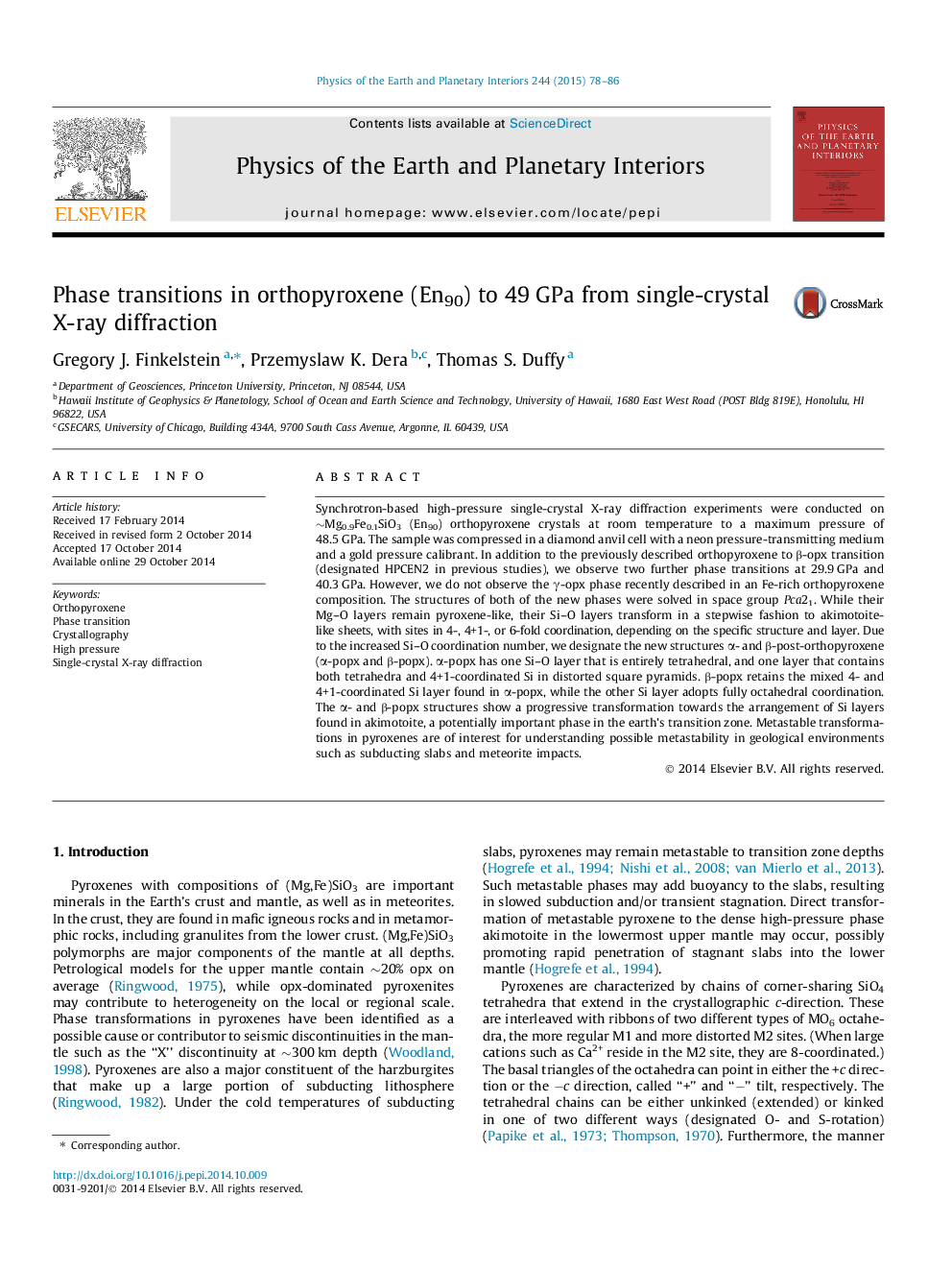| Article ID | Journal | Published Year | Pages | File Type |
|---|---|---|---|---|
| 4741509 | Physics of the Earth and Planetary Interiors | 2015 | 9 Pages |
•Single crystals of Mg0.9Fe0.1SiO3 orthopyroxene were compressed to 48.5 GPa in a Ne pressure-transmitting medium.•Transformation to the previously reported high-pressure β-orthopyroxene (β-opx) phase, as well as to two new high-pressure phases, was observed.•The new phases have been named α- and β-post-orthopyroxene (α-popx and β-popx) and both have Pca21 space group symmetry.•α-popx has Si in 4 and 4+1 coordination, while β-popx has Si in 4, 4+1, and 6 coordination and similarities to the mineral akimotoite.
Synchrotron-based high-pressure single-crystal X-ray diffraction experiments were conducted on ∼Mg0.9Fe0.1SiO3 (En90) orthopyroxene crystals at room temperature to a maximum pressure of 48.5 GPa. The sample was compressed in a diamond anvil cell with a neon pressure-transmitting medium and a gold pressure calibrant. In addition to the previously described orthopyroxene to β-opx transition (designated HPCEN2 in previous studies), we observe two further phase transitions at 29.9 GPa and 40.3 GPa. However, we do not observe the γ-opx phase recently described in an Fe-rich orthopyroxene composition. The structures of both of the new phases were solved in space group Pca21. While their Mg–O layers remain pyroxene-like, their Si–O layers transform in a stepwise fashion to akimotoite-like sheets, with sites in 4-, 4+1-, or 6-fold coordination, depending on the specific structure and layer. Due to the increased Si–O coordination number, we designate the new structures α- and β-post-orthopyroxene (α-popx and β-popx). α-popx has one Si–O layer that is entirely tetrahedral, and one layer that contains both tetrahedra and 4+1-coordinated Si in distorted square pyramids. β-popx retains the mixed 4- and 4+1-coordinated Si layer found in α-popx, while the other Si layer adopts fully octahedral coordination. The α- and β-popx structures show a progressive transformation towards the arrangement of Si layers found in akimotoite, a potentially important phase in the earth’s transition zone. Metastable transformations in pyroxenes are of interest for understanding possible metastability in geological environments such as subducting slabs and meteorite impacts.
